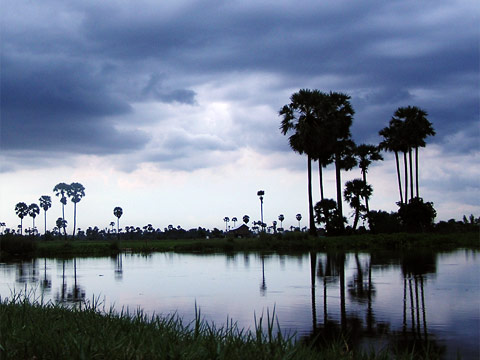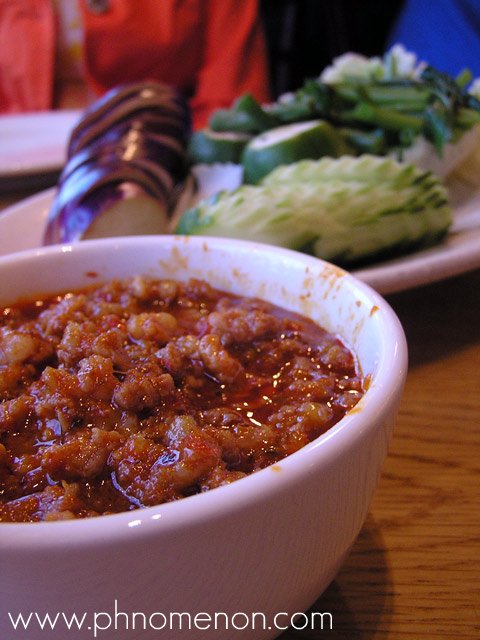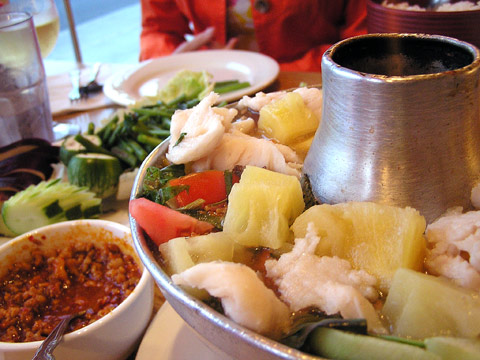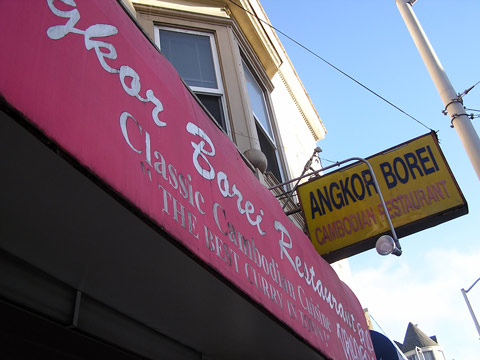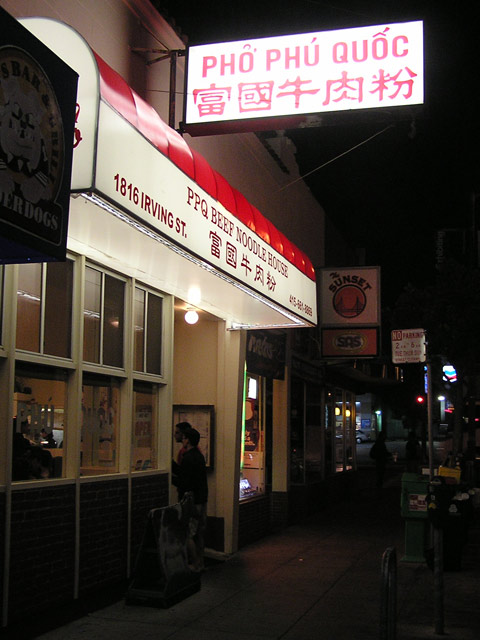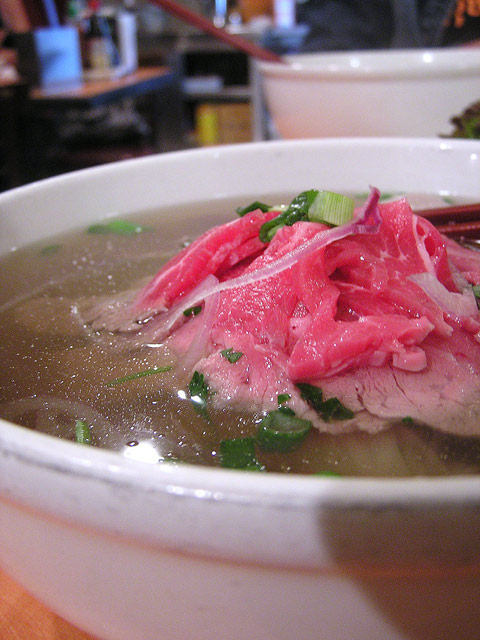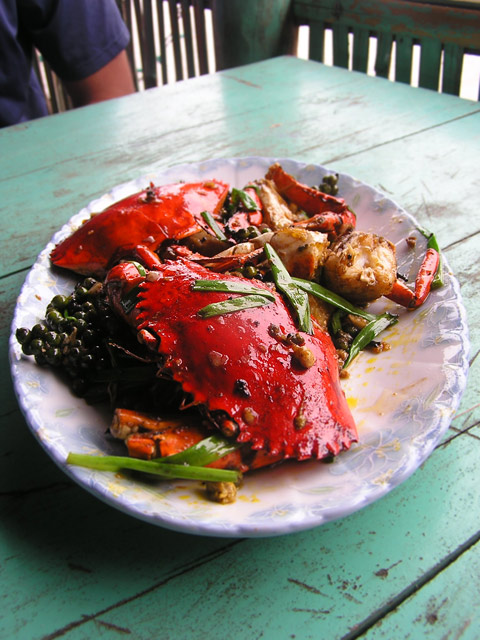The Nehru jacket. The jacket so nice that they named a Pacific island after it. The crisp battle armour of Third World service staff. Beige. The person inside it greets you in a characterless patter that suggests you’ve arrived in a non-place, a refuge from whichever city the hotel is located. It is a garment that signifies that the hotel bears no relationship to the city itself. A hotel designed to impersonate all of the other hotels where the beige Nehru jacket is worn. In this case the town was Siem Reap, the simulacra of a town located next to something of significance; a town of garish, tourist-driven architectural stupidity and misgovernance. The gewgaw wasteland writ large. The hotel was Shinta Mani.
My task was simple: spend six hours on the bus, 18 hours in the hotel, eat, write an article about it that appears in today’s Wall Street Journal Asia, read a Nobel Prize winning author by the pint-sized pool, six hours on the bus back to Phnom Penh. It wouldn’t be the first time I’ve been to Siem Reap and not seen a single Angkorean temple and it won’t be the last. I had plenty of time on my hands and wrote far too much to be submitted for the article, much of it inappropriate and off topic. The following is what I omitted from my draft as well as what the editors subsequently edited out, apart from the following quote:
Unlike the growing flood of boutique hotels in Siem Reap, Shinta Mani attempts to bridge the gap between rich and poor with a unique mix of philanthropy and hospitality training. Shinta Mani selects 26 students from surrounding villages to attend a 9 month hospitality course. Students are provided with on-the-job schooling, a monthly salary, meals, learning materials and a weekly stipend of four kilograms of rice to remit to their family…
…in return for providing the behind-the-scenes grunt work for the hotel. The hotel also offers tours of local villages from where it draws students and supplies options for tourists to buy villagers a bicycle, well, or house but it is unclear whether this a well-coordinated and long-term development strategy or the exploitation of the poor as a tourist attraction. Portmanteau-minded critics have dubbed this boutique assuaging of luxury guilt as ‘poorism‘.
Shinta Mani’s décor is relatively spartan with faux-marble tiles and minimal white walls adorned with hand-coloured lithographs of the nearby temple ruins. Its restaurant is less muted with a mandarine-painted dining room decorated with local silks. A single lotus flower in a hammered silver vase dresses each table.
My neighbouring diners were a pair of holidaying Japanese women: it was Golden Week in Japan and Siem Reap has been reaping the golden windfall. One wore a white T-shirt that said ‘Je voudrais un détente’ and the other carried a lime-green umbrella and a digital camera. When their plate of fish and chips with caper mayonnaise (US$7) arrived, they placed it in the centre of the table and together dissected it in a way that suggested a long term friendship rather than the intimacy of lovers.
A couple from Boston sat a few tables away. They asked the waiter to photograph them to memorialize their meal before they had eaten it. The man was balding with circular glasses and looked like a minor television actor whose name I can’t recall. The woman could be described as nondescript. They both ate something meaty, possibly the roast strip loin with okra, taro gnocchi and beef jus (US$15). They ordered desserts that looked like a square of kitchen sponge in HP sauce and discussed that they expected something different.
I spotted someone I knew from Phnom Penh strut through the lobby. Someone I wanted to avoid. They didn’t see me.
Service was surprisingly modest, unassuming and honest to the point of brutality. After discussing the a la carte Khmer-French fusion options with my waiter, when asked as to whether many tourists tried the Khmer set menu (US$16), the waiter answered with a blunt ‘no’. The set menu is structured more like a Western meal with an entrée*, main and dessert than in the Cambodian tradition of many dishes shared by the entire table or family. The wine list is expensive even by local standards, narrowly spanning Old- and New World wines. My waiter, shadowed by one of the student-trainees, recommended me the Yering Station Chardonnay (US$10 by the glass) to match the set menu.
The Bostonian couple gave me a blank stare of incomprehension while I wrote notes on the entrée of banh chiao. I wrote “street-food sublime” and made a note that somehow I had to put the words “hospitality” and “philanthropy” in the same sentence because they’re almost anagrams. I anagrammed “philanthropy” into “Hi, python larp!” and thought to myself that I should never dine alone ever again because it encourages me to record my interior monologue and thus betray my Scrabble-hustling skills. I invented a recipe for a dried python larp with sour mango in my head.
At its best, banh chiao is an exercise in street food sublime: a turmeric and rice flour pancake that is at once crispy and rubbery enveloping a mix of dried shrimp, fatty pork and crunchy bean shoots; served with a jungle of fragrant local herbs by a roadside vendor with dubious hygiene. At its worst, it is much like Shinta Mani’s, being a soggy pancake with a bland blend of foreigner-friendly minced chicken, pork and Chinese cabbage.
The main is prahok kroueng khtis, normally served as a dip with crudités, but in this case served as a curry alongside pandan-infused rice. The menu omits to mention that the central element to the dish is Cambodia’s national condiment and one of the larger challenges to an unfamiliar palate, the fermented fish paste prahok. The dish was dominated by salt and lacked its usual lemongrass punchiness. Cheik khtis, local namwa bananas boiled in sugar and fresh coconut milk rounded out the set on an eye-twitchingly sweet note.
I sent my inamorata an SMS to see if she thought that returning to my room and dejectedly drinking the minibar was, in the eyes of a newspaper’s accounts department, a legitimate expense for a food reviewer after a forgettable meal. Angkor Beer, bottle (US$2.50) times two. Heineken, can, (US$3) times two. Beer Lao, can (US$3) times two. She recommended against it. I didn’t.
On returning to my room, the service staff had turned down the bed, fluffed the pillows, cranked up the aircon to accommodate a flock of wayward penguins and changed the television channel to Fashion Channel. I tried to think of some way to write that the pillows were too soft without sounding like a complete wanker. It turns out that you can’t do so, at least not without making a self-deprecating joke about it.
Over breakfast (Black coffee (US$2.20) times two) I chatted with one of the students, Neana, 22, hailing from Tapul village in a mix of Khmer and English. He had completed six months of the training course and despite the tourism boom was downbeat about his job prospects. He was happy with Shinta Mani and had made many friends. Do you like the uniform? I asked.
“Only the jacket”.
Shinta Mani’s restaurant is open every day from 6:30am until 11:00pm. Guests are welcome to visit their Institute of Hospitality located next door and wonder why the students eat a simple Khmer sour soup and fried fish for lunch, but you don’t.
Location: Junction of Oum Khun and Street 14, Siem Reap. Tel: +855 (0) 63 761 998.
Dried Python Larp with Sour Mango
This is in no way larp, only loosely Cambodian but it is a great way to showcase dried snake flavor.
1 boneless dried snake
1 green mango, shredded
1 handful of mixed fresh fishwort, coriander and basil
1 tablespoon of fish sauce
1 tablespoon of lime juice
2 teaspoons ground roasted rice
Palm sugar to taste
Go to your local supermarket and buy a dried snake – if you’re in Cambodia, they’re available from Lucky Supermarket. Roast the dried snake over a charcoal fire, then break into smaller pieces. Mix with green mango, mint and basil. Mix fish sauce, lime juice, ground roasted rice and a little palm sugar, attempting to balance salty and sweet, then mix through the salad.
